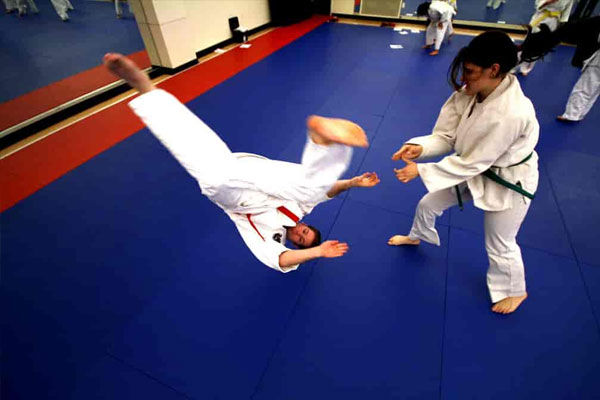Martial Arts Near Me
Hapkido
Hapkido, a Korean martial art, is renowned for its comprehensive system of self-defense techniques that utilizes joint locks, throws, kicks, and strikes. With its emphasis on fluid motion and practical application, Hapkido has gained recognition worldwide. In this exploration of Hapkido, we will delve into its historical roots, the techniques employed by practitioners, and its current status as a significant martial art.
Historically, Hapkido traces its origins to ancient Korea, where traditional martial arts practices flourished. This rich heritage incorporates influences from various indigenous Korean martial arts such as Taekkyon and Subak, as well as external influences from Chinese and Japanese martial arts. However, it was not until the mid-20th century that Hapkido began to take shape as a distinct martial art. Choi Yong-sul, a Korean martial artist who had studied extensively in China and Japan, is widely credited as the founder of modern Hapkido. His experiences and knowledge provided the foundation for the development of this unique martial art.
Hapkido is characterized by its versatility and adaptability, combining elements of both hard and soft techniques. Practitioners employ a blend of strikes, kicks, joint locks, and throws, utilizing an opponent's energy and momentum to neutralize their attacks. The techniques in Hapkido are aimed at redirecting and immobilizing opponents effectively, regardless of their size or strength. This focus on practical self-defense sets Hapkido apart from other martial arts.

Central to Hapkido are joint locks, which allow practitioners to control an opponent by manipulating their joints, tendons, or muscles. These locks can be employed in various situations, whether standing or on the ground. By applying pressure and leverage on key points, Hapkido practitioners can immobilize or force an opponent to submit. Joint locks combined with throws enable Hapkido practitioners to effectively control a confrontation and neutralize threats.
Another essential aspect of Hapkido is its emphasis on circular, flowing movements. Practitioners strive to harmonize with an opponent's force and redirect it, rather than meeting force with force. This characteristic provides individuals with the ability to defend themselves against larger and stronger adversaries. The circular and fluid motions of Hapkido techniques not only make it visually appealing but also allow for smooth transitions between offensive and defensive actions.
In addition to joint locks and throws, Hapkido places importance on strikes and kicks. These techniques are executed with precision and power and target vital points on an opponent's body. Strikes can include punches, palm strikes, elbow strikes, and knee strikes. Kicks in Hapkido encompass a wide range of techniques, from low kicks targeting an opponent's legs to high kicks intended to target the head or upper body. By incorporating strikes and kicks into their repertoire, Hapkido practitioners possess a well-rounded set of skills for both close and long-range combat.
While Hapkido has deep roots in traditional self-defense practices, it has also evolved as a competitive martial art. Hapkido competitions, both at the national and international levels, allow practitioners to showcase their skills. These events often incorporate specific rules and scoring systems to facilitate fair and controlled competitions. However, it is important to note that the competitive aspect of Hapkido is just one facet of its practice, with many practitioners focusing primarily on self-defense and personal development rather than competition.
Beyond self-defense and competition, Hapkido has gained popularity as a means of physical fitness and personal development. Its practice promotes discipline, focus, and mental fortitude, cultivating a sense of self-confidence and self-awareness. Hapkido training requires practitioners to push their physical and mental limits, fostering resilience and perseverance. In addition to the physical benefits of increased strength, flexibility, and coordination, Hapkido also instills crucial life skills such as respect, discipline, and humility.
Today, Hapkido continues to thrive globally, with numerous schools and organizations dedicated to its practice and promotion. Its adaptability and effectiveness in real-life self-defense situations appeal to individuals seeking practical skills for personal protection. Furthermore, Hapkido's emphasis on discipline and personal development attracts those who are interested in cultivating mental and physical well-being. The international Hapkido community remains vibrant, with seminars, workshops, and training camps serving as gathering points for enthusiasts from diverse backgrounds and skill levels.
As a testament to its effectiveness, Hapkido enjoys a continued presence as a martial art and a practical method of personal protection. Additionally, its ability to foster discipline, mental fortitude, and physical fitness has contributed to its appeal to individuals seeking personal development. Whether for self-defense, competition, or personal growth, Hapkido offers a unique and captivating martial arts experience.